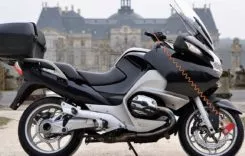Economy plus performance
Economy plus performance
Words and Photos: Joe Kress
Times change. “We’re sure seeing that,” Jason Hanson, of Speed’s Performance Plus, says. “Riders are coming to us in droves asking if there’s anything we can do to squeeze a little more fuel mileage out of their bikes. Especially guys on those new 103s and 110s.” Generally pleased with the power of these bigger-inch motors, riders aren’t so happy watching the fuel gauges drop like stones. Call it the new face of performance, power plus economy, and yes, Jason says, there’s plenty of help available here depending on just how far you’re willing to take things in that search for fuel mileage.
First thing to look at, say the SPP guys, are the basics, the mileage-influencing things common to all Harleys and not just those 110s. “Tire pressure, for instance,” Jason begins. “You wouldn’t believe how many guys are riding around on underinflated tires and complaining about their fuel mileage.” Keep those tires pumped up, he says, inflated to the tire manufacturer’s recommendations. “And premium replacement tires,” he goes on to say, “most often call for considerably more pressure than the OE rubber, especially on a loaded bagger ridden two-up.” Put it in. Not only will those tires last longer and perform as they’re designed to, but you’ll notice a nice slowdown on the movement of that fuel gauge. Check the alignment of the wheels, too, and anything else that could impede easy rolling down the road, like dragging brakes. “And something as simple as a clean air filter and a fresh set of spark plugs can work wonders,” Jason adds. Then there’s the riding style. If you have to leave every stoplight like you’re at the Winternationals or constantly twist the throttle wide open to pass everything on the road, you’re on your own. Keep that gas card handy; it’ll get plenty of use.
Next up, Jason says, is a dyno tune, but one specifically aimed at increasing fuel mileage in the cruising ranges. Yes, it’s an up-front expense, but picking up some mpg will soon enough cover that bill. “And with a fuel-injected bike,” Jason explains, “there’s a lot to be done here.” Using that Power Commander, adjustments in the air/fuel ratio are made at 250-rpm increments at every throttle position. “It’s almost,” Jason says, “like custom tuning at every mph in every gear.” But that’s just the start. With a basic performance map written for a specific bike, he’ll go back into that map, this time concentrating on the cruising ranges, 2,000 to 3,500 rpm at throttle positions from just off idle to roughly 40 percent. “Where most riders spend most of their riding time,” he explains, cruising down the highway with good airflow hitting the engine to help cool it down. “And that means I can safely lean the mixture there a bit, optimizing fuel use in that range most often used.” You’ll note that the air/fuel mixture in the power ranges is left completely alone, still set for maximum performance.
The mpg tuning gets even better if AutoTune is added on top of that Power Commander. “By going back into those same cruising ranges, but this time with the AutoTune program,” Jason says, “I can set the parameters for that most economical air/fuel mixture within a certain plus/minus range and let AutoTune then constantly adjust for given conditions.” It’s the best of both worlds, performance with fuel economy.
Now, do you want to really get after that mpg? “Going inside the engine there are lots that can be done to make things more efficient,” Jason adds, and efficiency always equals fuel mileage. A free-flowing air filter and the right set of pipes, either 2-into-1 style or with a connected “power chamber,” is the start. But with those newer engines, the 110s especially, the SPP techs say a change of cams and pistons can be a huge help for fuel mileage as well as all-around performance. Under-cammed and under-compressed from the factory, “just changing the pistons to 10.5:1s or thereabouts makes a real difference,” they say, and as for that cam swap they’ve had great results with 570s, 585s, and even their own SPP 615 grind, depending on the bike. Always with a gear drive. Not only is the timing more precise than with chains, but the whole assembly is a lot easier turning for more efficient running. Significantly, all those cam swaps can happen with stock heads and valve springs, and with these internal changes not only will the engine run smoother, cooler, and deliver the best mileage possible, it’ll also be plenty powerful when you need it. Twist that throttle too much and too often, though, and all mpg bets are off! Next time the Speed’s Performance team is in your area, stop in and have a talk about all of this. It’s the other side of performance and done correctly you and your wallet will love the results.
Source:
(605) 695-1401 – MN
(605) 695-2272 – SD






